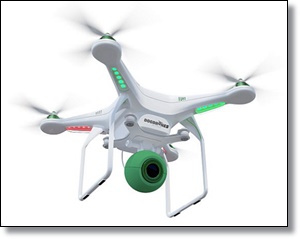Anyone who has seen a drone flying near them knows two things: 1. It can easily be mistaken for a bird, insect or other animal, and 2. It can be really annoying. It seems certain animals feel the same way because a video came out this week showing an alligator in Florida snatching a drone flying above it because it either mistook it for prey or was just really bothered by it. Either way, the scene made for some dramatic video, but the real drama began after the gator grabbed the drone from midair - while the destroyed device was in the reptile's mouth, it started pillowing out white smoke.
To read more on this story, click here: WATCH: Smoke Pours From Alligator's Mouth After It Pulls Down Flying Drone


















